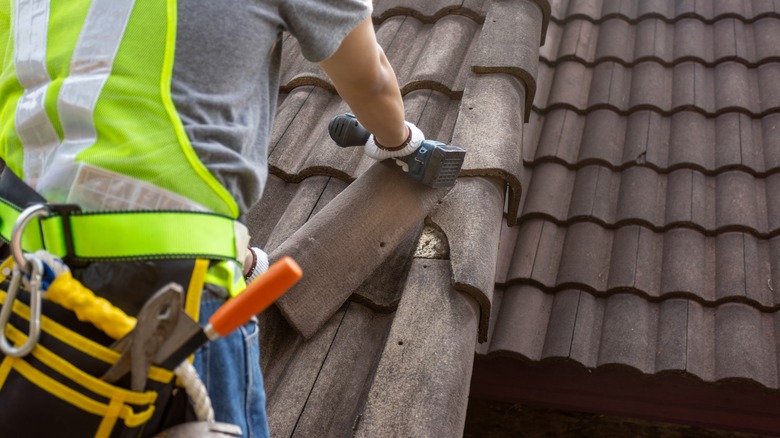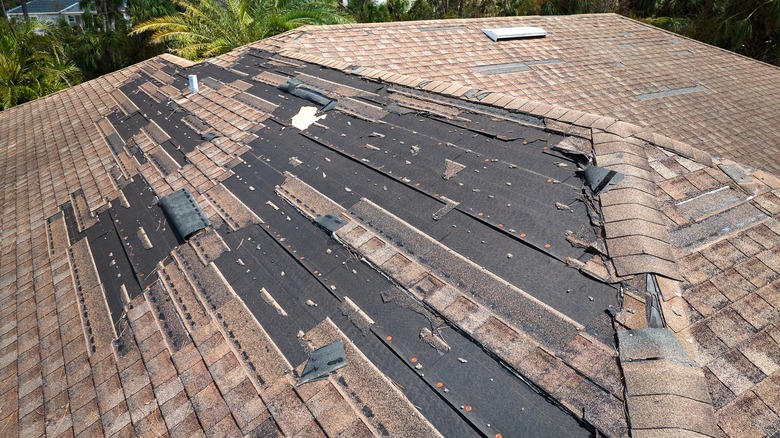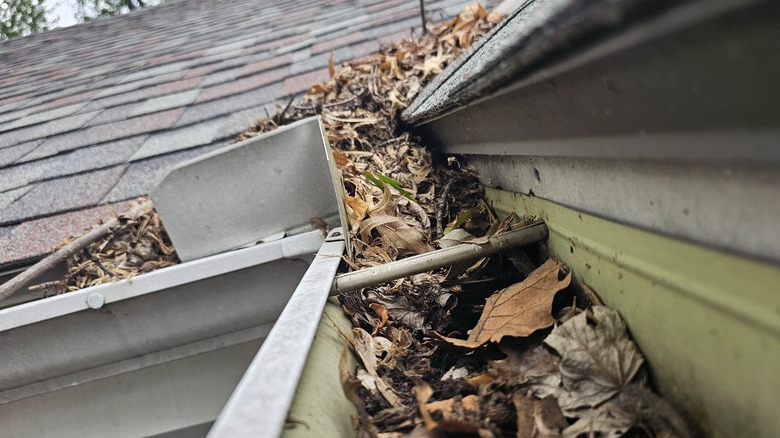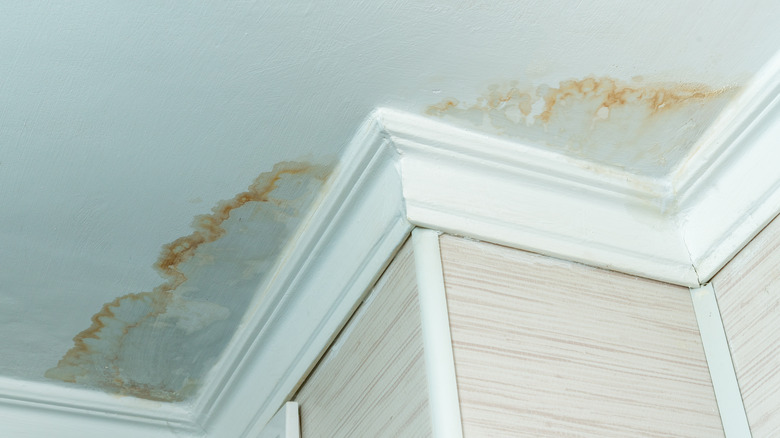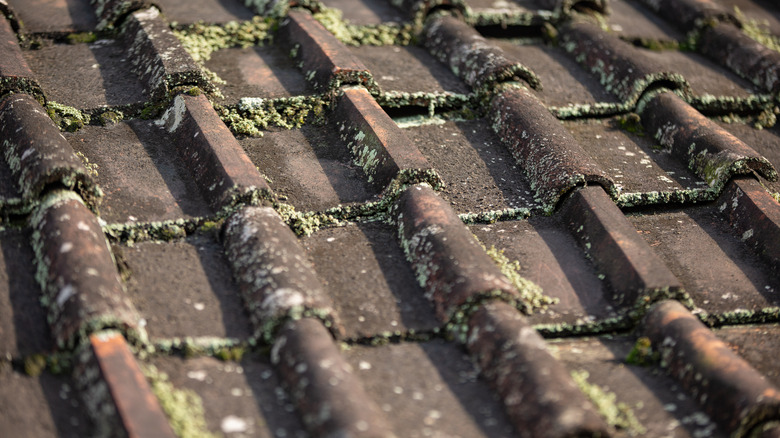Signs It's Time To Replace Your Roof
A roof is a house's protector. It shields those who live underneath it from all sorts of weather woes. It's like the hard hat of our house, standing up to ferocious storms, the scorching sun, and all of the relentless elements that nature throws our way. But even the strongest roofs can't defy the passage of time. So, how do you know when it's time to replace your old roof for a new shiny one?
Andre Afsharian is a roofing expert from Roof Repair Specialist, a company based in Santa Monica. With over two decades' worth of hands-on experience in roofing, Andre knows the signs that herald the need for a roof replacement — even the not-so-obvious cues that signal your roof is ready for retirement.
Afsharian spoke exclusively to Outdoor Guide and shared his insights into a roof's longevity and upkeep. Read on to gain his expert perspective and learn which signs indicate that it's time to replace your roof.
Your roof's shingles are damaged
Your roof's shingles are the overlapping tiles that comprise the outermost layer of your roof. Shingles come in all sorts of sizes and materials, ranging from everyday asphalt to durable metals to timeless slate. While some materials are more resistant to natural wear and tear than others, none are absolutely indestructible. When assessing damage, Andre Afsharian says to "Look for shingles that are cracked, buckling, curling at the edges, or missing altogether. These signs indicate that the shingles are past their life expectancy or that the roof is failing" and need to be repaired.
A number of factors can lead to damage to your roof's shingles. These begin right at installation. Afsharian asserts, "Proper installation is crucial. Poorly installed roofs can lead to issues like leaks and reduced lifespan, regardless of the quality of materials used." How do you know if your roof has been poorly installed? Common signs include mismatched shingles or a lack of uniformity in your roof's pattern.
In addition, Afsharian told Outdoor Guide, "Roofs in areas with severe weather conditions, such as high winds, hail, heavy rain, snow, and even extreme temperature [fluctuations] can experience accelerated wear and tear. [Even things like] salt exposure can affect certain materials." But it's not only weather elements that negatively impact the roof. Your maintenance habits and daily activities can also take their toll. According to Afsharian, "Roofs that are walked on more frequently, whether for maintenance or repairs, installation of equipment like solar panels, or other reasons, may experience more wear and tear."
There are granules in the gutters
Asphalt shingles commonly feature a layer of protective granules on the surface. These granules are tiny pieces comprising a blend of various materials. They are included to serve as an extra layer of defense from natural elements including UV radiation or fire. They can even extend the color of a roof over its lifespan.
Over time, however, these granules may erode and roll off into your gutters. According to Afsharian, "For asphalt roofs, if you start finding granules in the gutters, it means that the shingles are wearing out." Without these granules to "protect the roof from the sun's damaging rays," your roof becomes increasingly susceptible to premature aging and deterioration. As such, an accumulation of granules in your gutters should be taken seriously. If left too long, your roof could become an eyesore that your neighbors secretly hate to look at.
Should the shedding of granules be confined to a specific area, it is possible to conduct a targeted repair or spot replacement to address the area of erosion. However, if the loss of granules appears widespread across your roof, it's a clear indication that the entire system is nearing the end of its lifespan, necessitating a comprehensive roof replacement. So the next time you rake up dead leaves in your gutters, be sure to look out for signs of roof erosion too.
You notice leaks and water damage
You're reading a book in your bedroom, or powdering up after a shower, and notice a drop of water fall to the floor. You glance upward and discover a drip. Perhaps there is even a dark streak in your ceiling. Andre Afsharian emphasizes that these are not just minor inconveniences; these "could be a sign that your roof is failing and needs immediate attention."
A leaking roof is a serious issue that can wreak havoc on your home if left unaddressed. Water damage has a knack for insidiously infiltrating every nook and cranny, which is why water damage is a sign your roof needs a replacement and the reason water damage repairs extend beyond just fixing the visible signs of leakage.
For instance, moisture can seep into the attic insulation, saturating it and compromising its effectiveness. Furthermore, prolonged exposure to moisture can compromise the structural integrity of wooden components, such as rafters and trusses, leading to rot, warping, and even structural failure over time. Repairing water-damaged structural elements may involve reinforcing weakened sections or, in severe cases, completely replacing compromised components to ensure the safety and stability of your home. Additionally, it's crucial to assess and address any damage to electrical systems caused by water intrusion. Water and electricity don't mix, and even minor leaks can pose a significant risk of electrical fires or electrocution. Therefore, thoroughly inspecting and, if necessary, repairing or replacing water-damaged wiring, outlets, and fixtures is essential to safeguarding your home and its occupants.
Your roof is home to excessive mold
Often, as a secondary consequence of water damage, mold will emerge as a threat. "While moss or algae growth on the roof isn't necessarily a sign that you need a new roof, extensive growth can [further] trap moisture and lead to damage. If it's not just surface-level, it may indicate deeper issues," explains Afsharian.
The proliferation of mold on your roof can stem from a variety of underlying issues. For instance, poor ventilation can create an environment conducive to mold growth, as stagnant air traps moisture and fosters mold development. Similarly, damaged or improperly installed roofing materials can allow water infiltration, providing the ideal conditions for mold colonization. Additionally, clogged gutters or inadequate drainage systems can exacerbate water accumulation on the roof, further promoting mold growth. Even a lack of sunlight, which prevents adequate evaporation of water, allowing it to sit for a prolonged period of time.
Just like wood rot is a telltale sign it's time to replace your fence, addressing mold growth on your roof necessitates a multifaceted approach that addresses both the underlying causes of moisture infiltration and the remediation of existing mold colonies. From ensuring proper attic ventilation to repairing damaged roofing materials and resolving drainage issues, it is apparent why an entire roof replacement is often necessary.
Your roof's just plain old
Sometimes, a roof lasts its entire expected lifespan without any major issues. This lifespan varies depending on the roofing material. For example, according to Afsharian, "The typical lifespan of asphalt is about 20 to 40 years." Wood shingles have about the same, "but they require more maintenance to prevent rot, mold, and insect damage, he says. "Metal roofs can last 40 to 70 years, [while] clay and concrete tiles can last over 50 years. They are more durable and weather-resistant but can be more expensive than asphalt. Synthetic materials, including rubber, plastic, and polymer roofing, can last 40 to 50 years. These materials can mimic the look of wood or other natural materials but with less maintenance and at a lower cost. Last, slate is one of the most durable roofing materials, with a lifespan of 75 to 200 years. Its longevity comes with a higher cost, both in terms of materials and installation."
On the flip side are flat roofs, commonly made from EPDM (rubber), PVC (polyvinyl chloride), and TPO (thermoplastic polyolefin), which only last a decade or two.
While these figures represent the outer limits of a roof's lifespan, it's essential to remain vigilant as a roof nears or surpasses the upper end of its projected lifespan. At this point, even if outward signs of damage are absent, underlying issues may lurk undetected, potentially leading to costly repairs if left unaddressed. Therefore, considering replacement before visible deterioration occurs can help preemptively address any looming problems and ensure the long-term integrity of your home.
